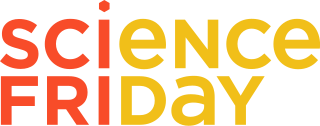
Science Friday is a weekly call-in talk show that broadcasts each Friday on public radio stations, distributed by WNYC Studios, and carried on over 470 public radio stations. SciFri is hosted by science journalist Ira Flatow and was created and is produced by the Science Friday Initiative. The program is divided into two one-hour programs, with each hour ending with a complete sign-off. The focus of each program is news and information on science, nature, medicine, and technology. The show originated as the Friday episode of the daily call-in talk show Talk of the Nation, but was spun off as a series in its own right when Talk of the Nation was canceled in June 2013.

Norman Lewis Corwin was an American writer, screenwriter, producer, essayist and teacher of journalism and writing. His earliest and biggest successes were in the writing and directing of radio drama during the 1930s and 1940s.
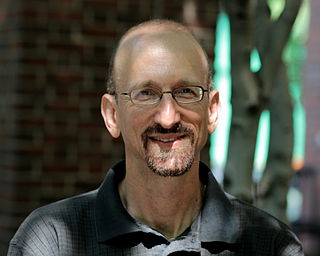
Brian Lehrer is an American radio talk show host on New York City's public radio station WNYC. His daily two-hour 2007 Peabody Award-winning program, The Brian Lehrer Show, features interviews with newsmakers and experts about current events and social issues. Lehrer was formerly an anchor and reporter for NBC Radio Networks and has been in broadcast journalism for over 30 years.

WNYC is the trademark and a set of call letters shared by WNYC (AM) and WNYC-FM, a pair of nonprofit, noncommercial, public radio stations located in New York City. WNYC is owned by New York Public Radio (NYPR), a nonprofit organization that did business as "WNYC RADIO" until March 2013.

HD Radio (HDR) is a trademark for an in-band on-channel (IBOC) digital radio broadcast technology. HD radio generally simulcasts an existing analog radio station in digital format with less noise and with additional text information. HD Radio is used primarily by AM and FM radio stations in the United States, U.S. Virgin Islands, Canada, Mexico and the Philippines, with a few implementations outside North America.
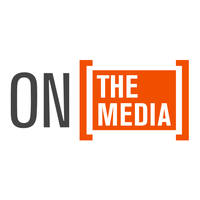
On the Media (OTM) is a public radio show that produces a newsletter, a podcast and an hour-long weekly radio program hosted and edited by Brooke Gladstone that reaches about 1.2 weekly million listeners across the United States. It is produced by WNYC-New York Public Radio. OTM is first broadcast on Friday evening over WNYC's FM service and is syndicated nationwide to more than 300 other public radio outlets. The program has also been available as a podcast since 2005. OTM also publishes a weekly newsletter featuring news on current and past projects as well as relevant links from around the web.
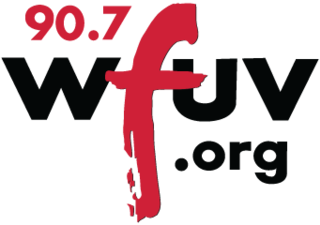
WFUV is a non–commercial radio station licensed to New York, New York. The station is owned by Fordham University, with studios on its Bronx campus and its antenna atop the nearby Montefiore Medical Center. WFUV first went on the air in 1947. It became a professional public radio station in 1990 and is one of three NPR member stations in New York City. Its on-air staff has included radio veterans Dennis Elsas, Vin Scelsa, Pete Fornatale, and Rita Houston.
Podcasts, previously known as "audioblogs", have roots dating back to the 1980s. With the advent of broadband Internet access and portable digital audio playback devices such as the iPod, podcasting began to catch hold in late 2004. Today there are more than 115,000 English-language podcasts available on the Internet, and dozens of websites available for distribution at little or no cost to the producer or listener.

The National Recording Registry is a list of sound recordings that "are culturally, historically, or aesthetically significant, and/or inform or reflect life in the United States." The registry was established by the National Recording Preservation Act of 2000, which created the National Recording Preservation Board, whose members are appointed by the Librarian of Congress. The recordings preserved in the United States National Recording Registry form a registry of recordings selected yearly by the National Recording Preservation Board for preservation in the Library of Congress.

New York Public Radio (NYPR) is the owner of WNYC (AM), WNYC-FM, WNYC Studios, WQXR-FM, New Jersey Public Radio, Gothamist, and the Jerome L. Greene Performance Space. Combined, New York Public Radio owns WNYC (AM), WNYC-FM, WQXR-FM, WQXW, WNJT-FM, WNJP, WNJY, and WNJO.
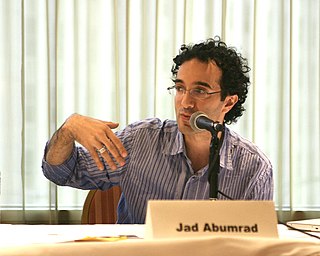
Jad Nicholas Abumrad is an American radio host, composer, and producer. He is the founder and former host of the syndicated public radio program Radiolab alongside Robert Krulwich.
Radiolab is a radio program and podcast produced by WNYC, a public radio station based in New York City, and broadcast on more than 570 public radio stations in the United States. The show has earned many industry awards for its "imaginative use of radio" including a National Academies Communication Award and two Peabody Awards.
PRIX EUROPA – The European Broadcasting Festival – is the Europe's largest annual tri-medial festival and competition. The event takes place in the third week of October in Berlin, Germany.

WNYC-FM (93.9 MHz) is a non-profit, non-commercial, public radio station licensed to New York City. It is owned by New York Public Radio along with WNYC (AM), Newark, New Jersey-licensed classical music outlet WQXR-FM (105.9 MHz), New Jersey Public Radio, and the Jerome L. Greene Performance Space. New York Public Radio is a not-for-profit corporation, incorporated in 1979, and is publicly supported through membership, development and sponsorship. The station broadcasts from studios and offices located in the Hudson Square neighborhood in lower Manhattan. WNYC-FM's transmitter is located at the Empire State Building. The station serves the New York metropolitan area.
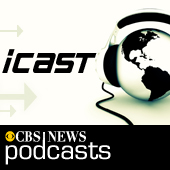
The CBS News iCast was a daily news audio podcast, created and first hosted by CBS News' New York–based Correspondent and Anchor Chris Mavridis. According to the CBS Corporation, the iCast was the world's first daily network news podcast. It was available at CBSnews.com and aggregated to hundreds of other websites.
Christian Lerch is a journalist and radio documentary producer based in Vienna, Austria and Berlin, Germany.
WNYC Studios is a producer and distributor of podcasts and on-demand and broadcast audio. WNYC Studios is a subsidiary of New York Public Radio and is headquartered in New York City.
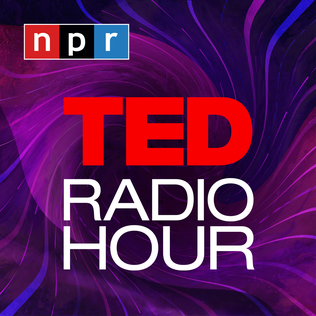
TED Radio Hour is a weekly, hour-long radio program and podcast, produced as a co-production between TED (conference) and National Public Radio. It is broadcast on 600+ public radio stations in the United States and internationally, and is also available as a free weekly podcast. The first episode aired on April 27, 2012, with host Alison Stewart. Beginning with Season 2, the series was hosted by Guy Raz. In November 2019, Manoush Zomorodi was named the show’s new host.
Siobhán McHugh is an Irish-Australian author, podcast producer and critic, oral historian, audio documentary-maker and journalism academic. In 2013 she founded RadioDoc Review, the first journal of critical analysis of crafted audio storytelling podcasts and features, for which she received an academic research award. She is Associate Professor of Journalism (honorary) at the University of Wollongong (UOW). and Associate Professor of Media and Communications (honorary) at the University of Sydney. Her latest book, The Power of Podcasting: telling stories through sound, was published by NewSouth Books in February 2022. A US edition with Columbia University Press is due October 2022.












